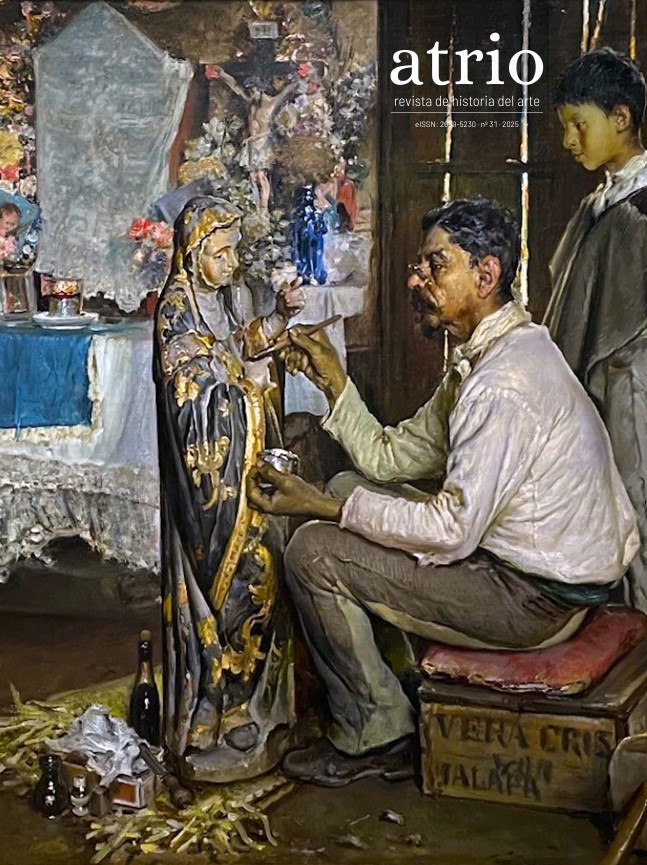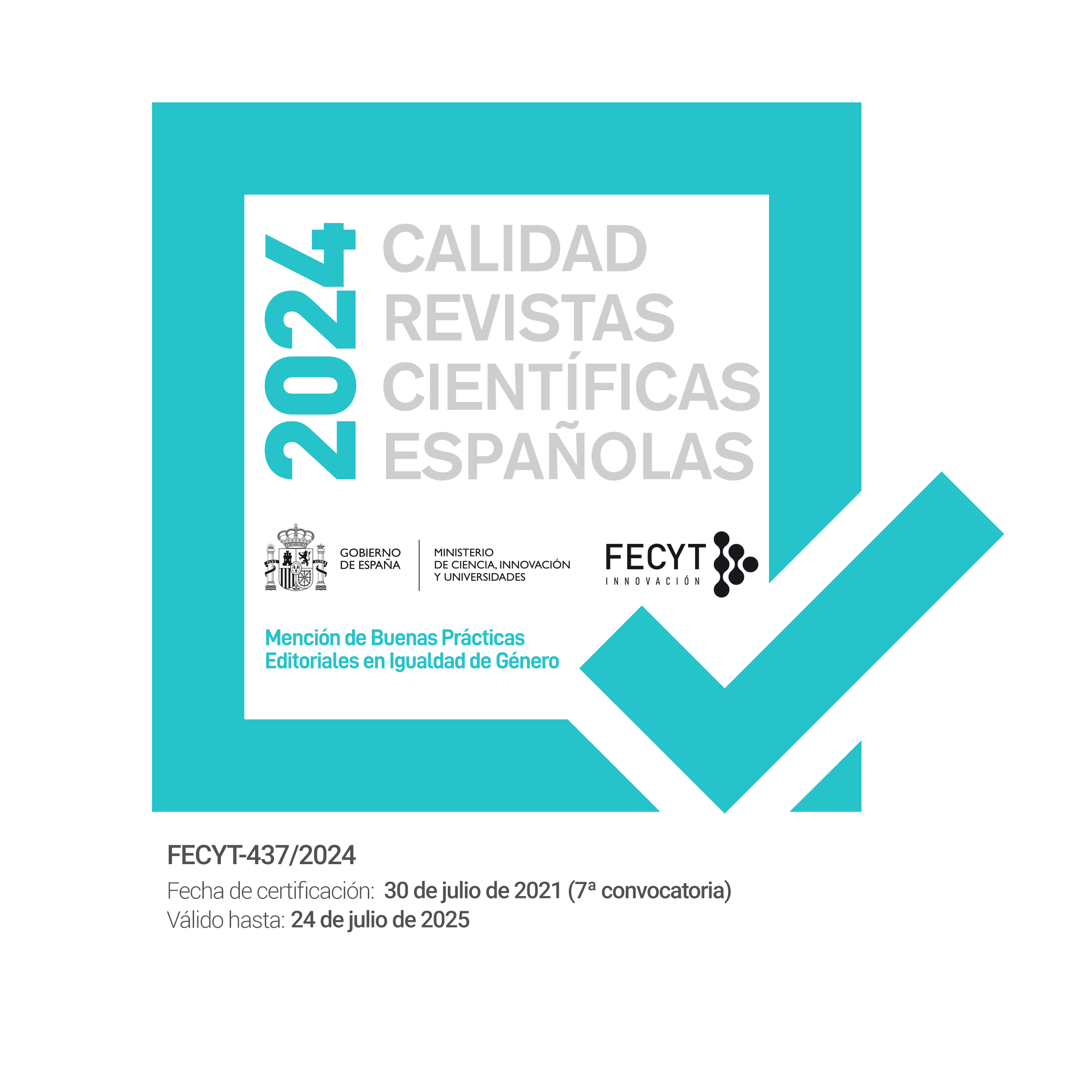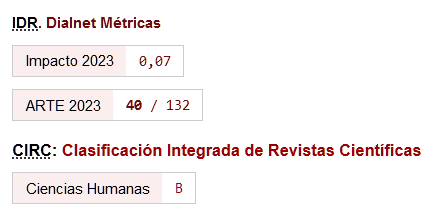The View of Mexico in Carl Nebel and Adele Breton as a Construction of the Post-Virreinal Imaginary.
DOI:
https://doi.org/10.46661/atrio.10818Keywords:
Mexico, 19th Century, Travelling artists, Carl Nebel, Adele Breton, Post-Virreinal imaginaryAbstract
The illustrations in the Picturesque and Archaeological Journey to the Most Interesting Part of Mexico by Carl Nebel Habes (1802-1855) and the watercolours by Adele Catherine Breton (1849-1923) share the same programmatic idea, although they differ in the way they present it. Both are rightfully part of the nominated travelling artists, although other names such as Humboldt, Rugendas or Egerton have capitalised on the bibliographical interest in this phenomenon. Some of the aims of this article are to draw attention to these two artists, to confront their different ways of confronting the Mexican past and present from the points of their different formation and condition, but also from very different times, ranging from Nebel's post-independence period to Breton's Porfiriato.
Downloads
References
Bayón, Damián. “Los artistas viajeros en América Latina.” En Actas del VII Simposio Hispano-Portugués de Historia del Arte, 169-175. Badajoz: Junta de Extremadura, 1995.
Calderón de la Barca, M. La vida en México durante una residencia de dos años en este país (1843), Traducido y con prólogo de Felipe Teixidor. Editor digital: Titivillus, 2023.
Diener, Pablo. “El perfil del artista viajero en el siglo XIX.” En Viajeros europeos del siglo XIX en México, 63-87. México: Fondo Cultural Banamex, 1996.
Diener, Pablo. “La pintura de paisajes entre los artistas viajeros.” En Viajeros europeos del siglo XIX en México, 137-157. México: Fondo Cultural Banamex, 1996.
Eder, Rita. “Las mujeres artistas en México,” Anales del Instituto de Investigaciones Estéticas, no. 202 (1982): 251-260. https://doi.org/10.22201/iie.18703062e.1982.50tomo2.1144.
Estrada de Gerlero, Elena Isabel. “La labor anticuaria novohispana en la época de Carlos IV: Guillermo Dupaix, precursor de la historia del arte prehispánico.” En América, un tema para el arte, vol. 1 de Arte, Historia e Identidad en América. Visiones comparadas, coordinado por Gustavo Curiel Méndez, Renato González Mello y Juana Gutiérrez Haces, 191-206. México: UNAM, 1994.
García Sáiz, María Concepción. “Antonio del Río y Guillermo Dupaix: el reconocimiento de una deuda histórica.” Anales del Museo de América, no. 2 (1994): 99-119.
Gutiérrez Haces, Juana. “Etnografía y Costumbrismo en las imágenes de los viajeros.” En Viajeros europeos del siglo XIX en México, 159-179. México: Fondo Cultural Banamex, 1996).
Illán Martín, Magdalena. “Artistas mexicanas en el París de fin-de-siècle. Hacia la visibilización del talento creativo femenino.” En Arte, identidad y cultura visual del siglo XIX en México, 209-228. Puebla: BUAP, 2023.
Juárez López, José Luis. Las litografías de Carl Nebel. Versión estética de la invasión norteamericana, 1846-1848. México: Miguel Ángel Porrúa, 2004.
McVicker; Mary French. Adele Breton: A Victorian Artist Amid México’s Ruins. Albuquerque: University of New Mexico Press, 2005.
Minguet, Charles, y Jean-Pierre Duviols. Frederick Catherwood. Un monde perdu et retrové. París: Bibliotheque de l’image, 1993.
Perales Piqueres, Rosa María. “Aproximaciones del imaginario americano en artistas y viajeros europeos a México en el siglo XIX. Breve apunte sobre las mujeres viajeras.” Norba. Revista de Arte, no. XXXVIII (2018): 87-107.
Ranero Castro, Mayabel. “Mujeres viajeras.” Ulúa. Revista de historia, sociedad y cultura. Instituto de Investigaciones Histórico-Sociales, no. 10 (2007): 1-38.
Rojas Mix, Miguel. América imaginaria. Barcelona: Lumen, 1992.
Velázquez Guadarrama, Angélica. Ángeles del hogar y musas callejeras: representaciones femeninas en la pintura del siglo XIX en México. México: UNAM, 2018.
Published
How to Cite
Issue
Section
License
Copyright (c) 2025 Francisco Javier Pizarro Gómez, Angelika García Manso

This work is licensed under a Creative Commons Attribution-NonCommercial-ShareAlike 4.0 International License.
Los autores/as que publican en Atrio. Revista de historia del arte están de acuerdo con los siguientes términos:
- Los autores/as conservan los derechos de autor y garantizan a la revista el derecho de ser la primera publicación del trabajo al igual que licenciado bajo una licencia de Creative Commons Attribution-NonCommercial-ShareAlike 4.0 International License que permite a otros compartir el trabajo con un reconocimiento de la autoría de este y la publicación inicial en esta revista.
- El autor/a o cedente del material que se entrega para su publicación autoriza a la revista para que publique, sin obligación alguna (económica o de otra naturaleza), el contenido del referido manual tanto en formato papel, como en digital, así como en cualquier otro medio. Esta cesión de uso del material entregado comprende todos los derechos necesarios para la publicación del material en la revista. Quedan garantizados, simultáneamente, los derechos morales del autor
- El autor/a o cedente es plenamente consciente y está de acuerdo con que todos o cualesquiera de los contenidos proporcionados, formarán una obra cuyo uso se cede a la revista para su publicación total o parcial.
- El autor/a o cedente garantiza ser el titular de los derechos de Propiedad Intelectual sobre los contenidos proporcionados, es decir, sobre el propio texto e imágenes/fotografías/obras fotográficas que se incorporan en su artículo.
- El autor/a o cedente asegura y garantiza: (i) que todo el material enviado a la revista cumple con las disposiciones legales aplicables; (ii) que la utilización de cualquier material protegido por derechos de autor y derechos personales en la concepción del material se encuentra regularizada; (iii) que obtuvo las licencias de derechos, permisos y autorizaciones necesarias para la ejecución del material, inclusive los derechos de imagen, si fueran aplicables; y (iv) que el material no viola derechos de terceros, incluyendo, sin limitarse a estos, los derechos de autor y derechos de las personas.
- El autor/a o cedente, exime a la revista de toda y cualquier responsabilidad con relación a la violación de derechos de autor, comprometiéndose a emplear todos sus esfuerzos para auxiliar a la revista en la defensa de cualquier acusación, medidas extrajudiciales y/o judiciales. Asimismo, asume el abono a la revista de cualquier cantidad o indemnización que esta tenga que abonar a terceros por el incumplimiento de estas obligaciones, ya sea por decisión judicial, arbitral y/o administrativa.













